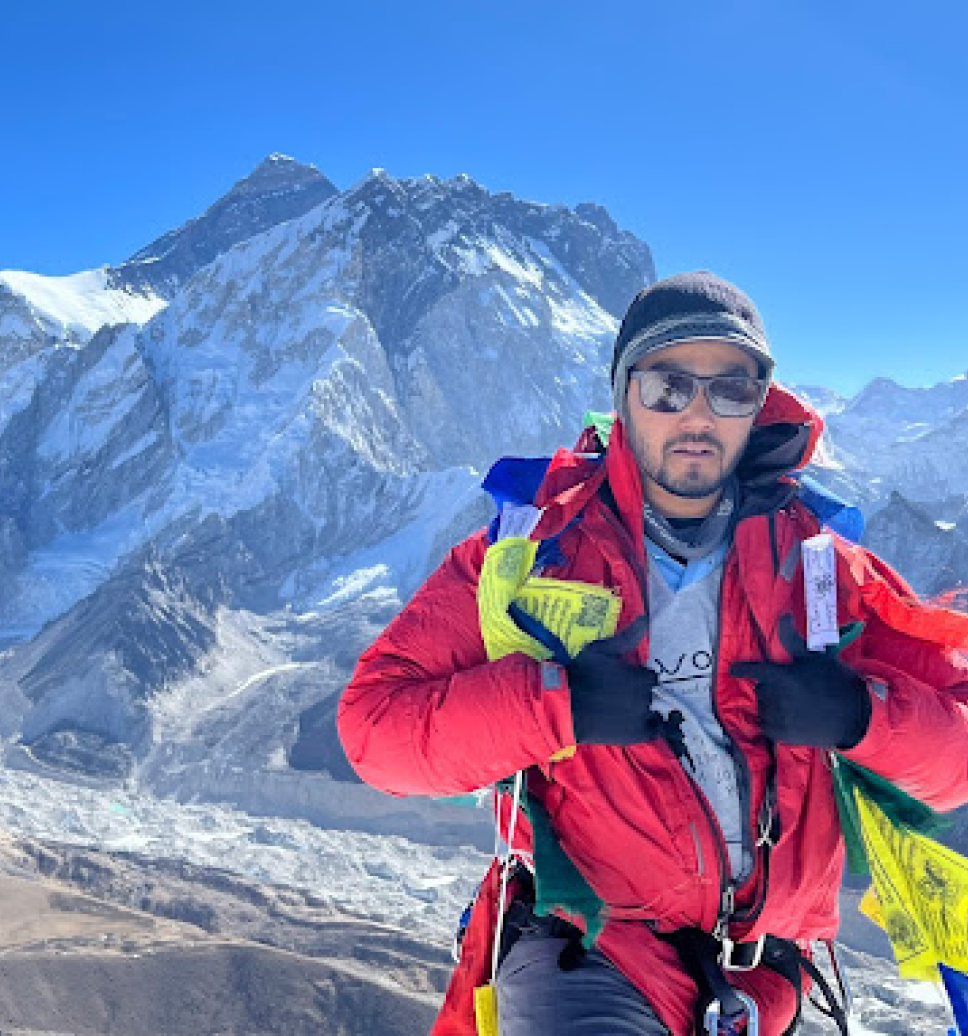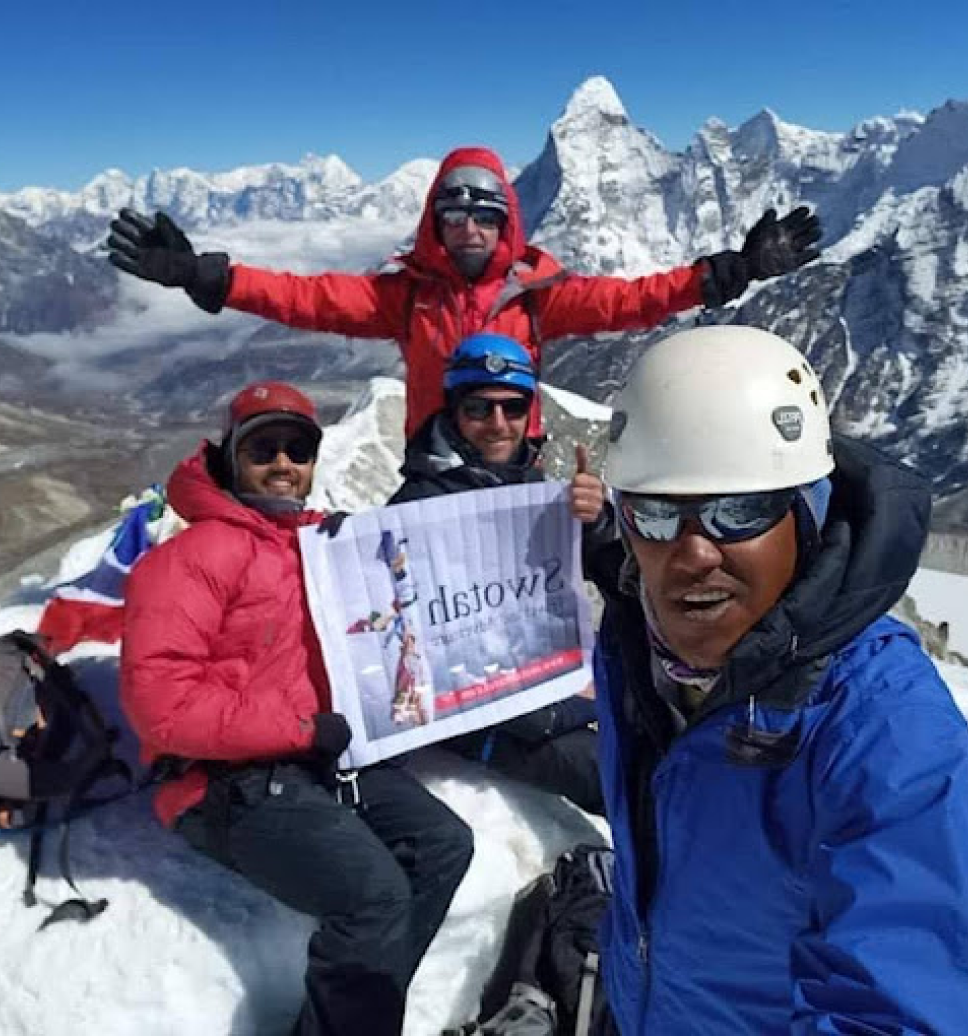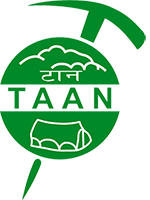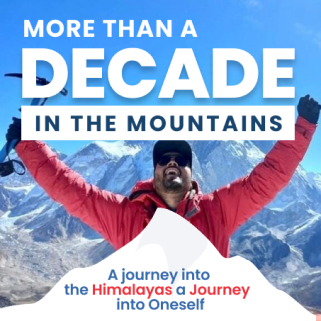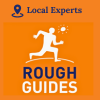GUARANTEED DEPARTURES
Check upcoming trip dates, availability & prices. If you can't see dates that suite you, contact us we will do our best to assist you.
| GUARANTEED DEPARTURES | PRICE | AVAILABILITY | |
| Nov 6, 2025 - Nov 20, 2025 | $1775 | High | |
| Nov 17, 2025 - Dec 1, 2025 | $1775 | High | |
| Nov 28, 2025 - Dec 12, 2025 | $1775 | High | |
| Jan 23, 2026 - Feb 6, 2026 | $1775 | High | |
| Mar 5, 2026 - Mar 19, 2026 | $1725 | High |
Trek Highlights
- Witness the majestic panorama of Everest, Lhotse, and other high peaks from the summit of Gokyo Ri.
- Stand beside Ngozumpa, the longest glacier in the Himalayas, offering awe-inspiring sights of the ice landscape.
- Visit the series of six turquoise Gokyo Lakes, the world's highest freshwater lake system.
- Immerse in the rich Sherpa culture in quaint villages and visit ancient monasteries along the way.
- Enjoy the serenity of less-trodden paths, allowing for a peaceful trekking experience.

Gokyo Ri is an alternative trek in the Everest region for people who don’t want to visit the Everest base camp and high passes but want to visit and view the amazing mountains of the Everest region.
Tipping Recommendation
We recommend allocating 10-15% of your total tour cost to tipping guides, drivers, and other hardworking staff who ensure your experience is unforgettable. While tipping is not mandatory, it is a meaningful way to support the seasonal workers who dedicate themselves to making your trip extraordinary.
By booking with us and participating in the tipping culture, you are directly contributing to Nepal’s local economy and helping sustain the tourism workforce. This support is crucial in retaining talent within the country and addressing challenges like brain drain.
Your generosity makes a lasting impact—thank you!
Photo Gallery
Dive into our gallery to get a glimpse of the awe-inspiring vistas waiting for you on our guided treks across stunning landscapes.
Brief Itinerary
Comprehensive Trek Guide
Experience the grandeur of a beautiful journey to one of the most amazing viewpoints for great views of Everest and the other Himalayas, Gokyo Ri. The Gokyo Ri Valley trek is an alternative to classic treks in the Everest region.
The 15-day Gokyo Ri valley trek begins from the ancient city of Kathmandu, where we visit several heritage sites and head towards the major starting hub of any trek in the Everest region, Lukla. Next, the trek takes us to the turquoise Gokyo Lakes and Gokyo Ri, providing exceptional views of Everest and the Himalayas alongside several glaciers, including the largest glacier of Nepal, Ngozumpa Glacier.
This trek passes through the Everest region of Nepal, flaunting breathtaking sceneries of Mount Everest and many more is physically strain-free. While on the Gokyo Ri Valley trek, one doesn't have to worry about reaching the base camp of Everest or crossing high passes in the vicinity. Instead, it is perfect for travellers who wish to try something new in the Everest region without having to reach the base camp of the world's tallest mountain or conquer high mountain passes in the Everest region.
Thus, if you wish for an easy trek in the Everest region without compromising the scenery and the landscapes, this trip is definitely for you. Experience comfortable trekking in the Everest region of Nepal with the Gokyo Ri Valley trek!
Best Time for Gokyo Ri Valley Trek
The Gokyo Ri Valley Trek is best undertaken during the pre-monsoon spring months of March to May and the post-monsoon autumn period from September to November. During these windows, trekkers can enjoy moderate weather, clearer skies, and minimal precipitation, offering the best conditions for both trekking and photography.
Spring (March to May) is a time of blossoming rhododendrons and clearer skies. The temperatures are comfortably warm at lower elevations and cool at higher altitudes, with average daytime temperatures ranging from 10°C to 15°C. This season offers the chance to see the Himalayas in full splendor as the visibility is usually excellent.
Autumn (September to November) sees stable weather and clear mountain views. Post-monsoon, the dust and pollution have been cleared from the air, enhancing visibility. Temperatures during this season are similar to those in spring, although nights can be significantly colder, particularly in November when winter approaches.
Difficulty of Gokyo Ri Valley Trek
The Gokyo Ri Valley Trek is considered moderate to challenging, primarily due to its high-altitude trekking paths which can reach up to an elevation of 5,357 meters (17,575 feet) at Gokyo Ri itself. Acclimatization days are essential to reduce the risk of altitude sickness.
Trekking days can involve 5-7 hours of walking, often on uneven terrain with steep ascents and descents. Previous hiking experience, good physical fitness, and stamina will significantly contribute to a more enjoyable trekking experience. Trekkers should be prepared for the possibility of sudden weather changes and have a flexible itinerary to accommodate acclimatization needs or weather-related disruptions.
Food and Accommodation
Food and accommodation along the Gokyo Ri Valley Trek are provided in teahouses and lodges, offering a chance to experience Sherpa hospitality. Accommodation is typically basic but clean, with twin-sharing rooms and common washroom facilities. Most teahouses provide blankets, but a four-season sleeping bag is recommended for additional warmth.
The food in teahouses is wholesome and nourishing, often including traditional Nepali fare such as "dal bhat" (lentil soup, rice, and vegetables), "momos" (dumplings), and Tibetan bread. Western dishes like pasta, pizza, and pancakes are also commonly available. It is crucial to stay hydrated at high altitudes, so plenty of water, along with hot beverages like tea and coffee, should be consumed.
Gokyo Ri Valley Trek Permits
For the Gokyo Ri Valley Trek, which lies within the Sagarmatha National Park in Nepal, trekkers are required to obtain certain permits. Here’s what you need to know:
1. Sagarmatha National Park Entry Permit
Since the Gokyo Ri Trek is within the Sagarmatha National Park, a UNESCO World Heritage Site, you must obtain an entry permit. This can be acquired either in Kathmandu at the Nepal Tourism Board office or at the park's entrance in Monjo. The fees contribute to the conservation efforts within the park and the maintenance of the trails.
2. TIMS Card (Trekkers' Information Management Systems)
The TIMS Card is designed to ensure the safety and security of trekkers. It helps authorities keep track of trekkers in the region and manage the trekker's database. You can get a TIMS Card in Kathmandu or Pokhara at the offices of the Nepal Tourism Board. Remember, a TIMS card can only be obtained via registered travel agencies.
3. Khumbu Pasang Lhamu Rural Municipality Permit
The Khumbu Pasang Lhamu Rural Municipality Permit is a local permit required for trekkers traveling through the Everest region, which includes the Gokyo Ri Valley Trek.
Permit Costs:
- Sagarmatha National Park Entry Permit: The cost varies for SAARC nationals and foreign nationals. The fee for foreign nationals is approximately 3,000 NPR (which is subject to change).
- TIMS Card: the TIMS Card costs about 2,000 NPR for foreigners and 1000 NPR for SAARC nationals (these rates are also subject to change).
- Local Area Permit: The cost of the Khumbu Pasang Lhamu Rural Municipality Permit is approximately 2,000 NPR for all foreign trekkers. The revenue from this permit is used to fund local community projects and the maintenance of the trails within the rural municipality.
Additional Information:
- Always carry your permits with you during the trek, as you will need to show them at various checkpoints.
- Keep your permits safe from damage by storing them in a waterproof container or bag.
- It’s advisable to keep digital copies or photographs of your permits in case they are lost or damaged.
Please note that the permit requirements and costs are subject to change, and it's essential to check the latest information before planning your trek. It is also recommended to arrange these permits in advance, either on your own or through a trekking agency, to streamline your preparations for the trek.
Packing List – Gokyo Valley Trek
A comprehensive packing list is essential for the Gokyo Ri Valley Trek to ensure comfort, safety, and preparedness for the harsh and unpredictable mountain climate. Here are some of the essentials:
- Clothing: Layering is key. Include thermal base layers, fleece jackets, a down jacket, and waterproof outer layers. Don't forget a hat, gloves, and thermal undergarments for colder conditions.
- Footwear: Sturdy, waterproof trekking boots are a must, along with several pairs of woollen or synthetic blend socks to prevent blisters.
- Backpack: A comfortable, fitting backpack with a rain cover. A smaller day pack is also useful.
- Sleeping Gear: A four-season sleeping bag and an optional sleeping bag liner for extra warmth.
- Health: A first-aid kit, including altitude sickness medication, water purification tablets, and personal medication.
- Accessories: Sunglasses, sunscreen, lip balm with SPF, and a wide-brimmed hat for protection against the sun.
- Navigation: A map, compass, or GPS device. Although the trail is well-marked, these can be vital when visibility is poor.
- Electronics: A headlamp with extra batteries, a camera, and a portable charger.
- Personal Items: Toiletries, quick-dry towels, hand sanitiser, toilet paper, and wet wipes.
Remember to pack light and only bring what is necessary, as carrying excessive weight can make the trek significantly more challenging. It's also possible to rent or buy gear in Kathmandu or Namche Bazaar before the trek.
Tipping Recommendation
We recommend allocating 10-15% of your total tour cost to tipping guides, drivers, and other hardworking staff who ensure your experience is unforgettable. While tipping is not mandatory, it is a meaningful way to support the seasonal workers who dedicate themselves to making your trip extraordinary.
By booking with us and participating in the tipping culture, you are directly contributing to Nepal’s local economy and helping sustain the tourism workforce. This support is crucial in retaining talent within the country and addressing challenges like brain drain.
Your generosity makes a lasting impact—thank you!
What's Included
- Airport transfers
- Standard/Deluxe rooms in Kathmandu on twin/double sharing with breakfast and dinner
- Guided sightseeing tour in Kathmandu along with entrance fees and a professional guide
- Accommodation during trek (or camping in case of need)
- All meals (Breakfast, lunch, dinner with soup) during the trek
- Authorized English-speaking guide along with Porters(3:1) for the trek
- Two-way Kathmandu- Lukla airfare with domestic airport departure tax
- Equipment clothing for porters including their insurance
- All applicable government tax
- All expenses for all staff –meals, accommodation, salary, equipment, insurance, transportation
- All necessary paperwork and Trekkers' Information Management System fees (TIMS)
- Medical kit (carried by your trek leader)
What's not Included
- International flights; Nepalese visa fee
- Excess baggage charge(s) for the domestic flight
- Extra night accommodation in Kathmandu because of early arrival, late departure or early return from mountain due to any reason other than the scheduled itinerary
- Lunch and evening meals in Kathmandu
- Travel and rescue insurance
- Personal expenses (phone calls, laundry, bar bills, battery recharge, extra porters, bottle or boiled water, shower, etc.)
- Tips for guide(s), porter(s) and driver(s)
Frequently Asked Question
1. Will somebody come to pick me up at the airport upon arrival
2. Is there an Orientation program
3. What is the overnight accommodation like
4. How big are the groups
5. Is Travelling in Gokyo Ri valley safe for women
6. What about security during trekking
8. What sort of food can I expect in trekking
8. Is the drinking water safe in trekking region
9. What mode of transportation do you use
10. What is the best season for the trekking in Gokyo Ri valley
11. Will I be taken care of during emergency
12. What is appropriate dress for trekking
13. Is it possible to alternate or change the day trips
14. Are we sure to get room while trekking
15. Are your guides reliable and certified
16. How can I charge my electronics during the trip
17.Is there any communication while we are on trekking
18. Can I add extra days to my trekking trip
19. What immunizations will I need
20. How far do I trek each day
21. How will my booking be processed
22. Do we need to carry our bags by our self or you will provide porters
Company Reviews
Similar Trips
Related Trips
Let your travels tell a story—crafted by locals, inspired by mountains, and lived by you.
.jpg)






